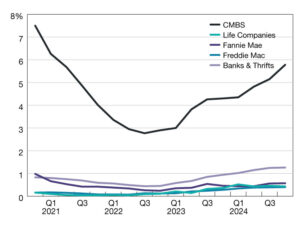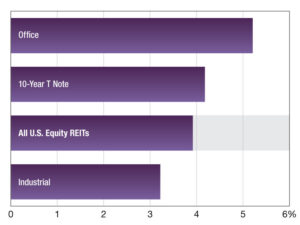Maximizing the Benefits of Sale-Leasebacks


In the complex world of corporate finance, sale-leaseback transactions have emerged as a strategic tool for companies looking to enhance liquidity and optimize their balance sheets. Exploring and understanding the financial strategies and considerations that make sale-leasebacks an attractive option for companies is one of the tools to consider, but depending on your company’s specific circumstances and situation it may not always be the best option.
The primary appeal for companies opting for sale-leaseback transactions is to unlock capital that is otherwise committed to a non-liquid asset. By converting their building assets into cash, businesses can reinvest in core operations, expand their research, pay down debt, upgrade technology or simply shore up their cash reserves. Liquidity created through a sale-leaseback can be particularly beneficial for companies facing tight credit markets or those that prefer not to incur additional debt to expand.
READ ALSO:
Sale-leaseback transactions offer a unique balance between debt and equity. Instead of taking on new debt, which would increase leverage and affect credit ratings, companies can leverage existing assets. This strategy keeps the balance sheet cleaner and can improve a company’s financial ratios, which are closely monitored by investors and lenders.
Companies can often deduct 100 percent of their lease payments as operating expenses, reducing taxable income. This makes the tax implications one of the most attractive features of a traditional sale- leaseback.
Additionally, because the lessee no longer owns the asset, they avoid the complexities of depreciation recapture, which requires dealing with adjusted basis calculations to determine tax liability, which can arise in a traditional sale.
Accounting for sale-leasebacks
For companies looking to improve their financial statements, sale-leaseback transactions can be structured as off-balance-sheet financing but must adhere to specific accounting standards and regulations to ensure proper disclosure. An off-balance sheet structure can enhance key performance metrics such as return on assets and return on equity, making the company’s balance sheet financially healthier to stakeholders, however, it does not provide complete transparency to investors and stockholders.
Accounting rules and guidelines can change on an annual basis, so it is important to review with your CPA to understand the specific tax implications, based on your jurisdiction and the specific structure of your transaction, whether it is a traditional sale-leaseback or an off-balance sheet transaction.
Mitigating risk and improving a company’s flexibility is another advantage of sale-leaseback transactions. Because it no longer owns the asset, the company’s risk is reduced, including capital improvement renovations and building obsolescence that eventually would need to be addressed. This can be particularly advantageous for companies that operate in industries with rapidly changing technology or market conditions. Leasing the asset back provides operational flexibility, as companies can negotiate potential lease terms without the long-term commitment of ownership.
Structural considerations
Despite the many advantages, sale-leaseback transactions are not without challenges. Sellers in today’s environment need to consider the financial stability of the buyer/landlord to ensure they can fulfill their obligations over the lease term.
Companies must carefully evaluate the terms of the lease, including the length, cost and potential restrictions on use. Companies should have a full understanding of the current condition and functionality of their facility before entering negotiations. Negotiating capital improvements, such as a new roof, HVAC, interior lighting and parking lots, along with the maintenance of these capital expenses can significantly affect the favorability of the transaction.
Structures can be complex and usually require extensive negotiation and due diligence. Financial advisers, legal experts and real estate professionals can help navigate these complexities and ensure that the deal aligns with the company’s and the investors’ long-term strategic goals.
The timing of a sale-leaseback transaction can dramatically affect the economic outcome of the transaction. Companies should consider market conditions and the potential future value of their asset. Selling in a strong market can yield higher proceeds, but leasing back at a time of rising rental rates could offset some of the benefits. Having a CRE professional conduct a thorough market analysis and long-term financial forecasting should be part of any company’s decision-making process.
Sale-leaseback transactions can offer a versatile financial strategy for companies looking to improve liquidity, invest in modern technology or expand without increasing leverage. By carefully considering the financial, tax and operational implications, businesses can effectively navigate the landscape of sale-leaseback transactions and position themselves for sustained growth and stability.
Daniel Levison is principal broker for Commercial Property Consultants & CEO of CRE Holdings LLC.
The post Maximizing the Benefits of Sale-Leasebacks appeared first on Commercial Property Executive.





